The all-electric Dodge Charger Daytona SRT® Concept was formally introduced on Wednesday of Speed Week in front of an invite-only crowd in Metro Detroit, but a week earlier, select media got a chance to check it out in advance. I was among the small group invited to the company’s headquarters in Auburn Hills to get an early look at all of the Dodge Speed Week news, but the most significant item on hand was the new battery-powered muscle car.
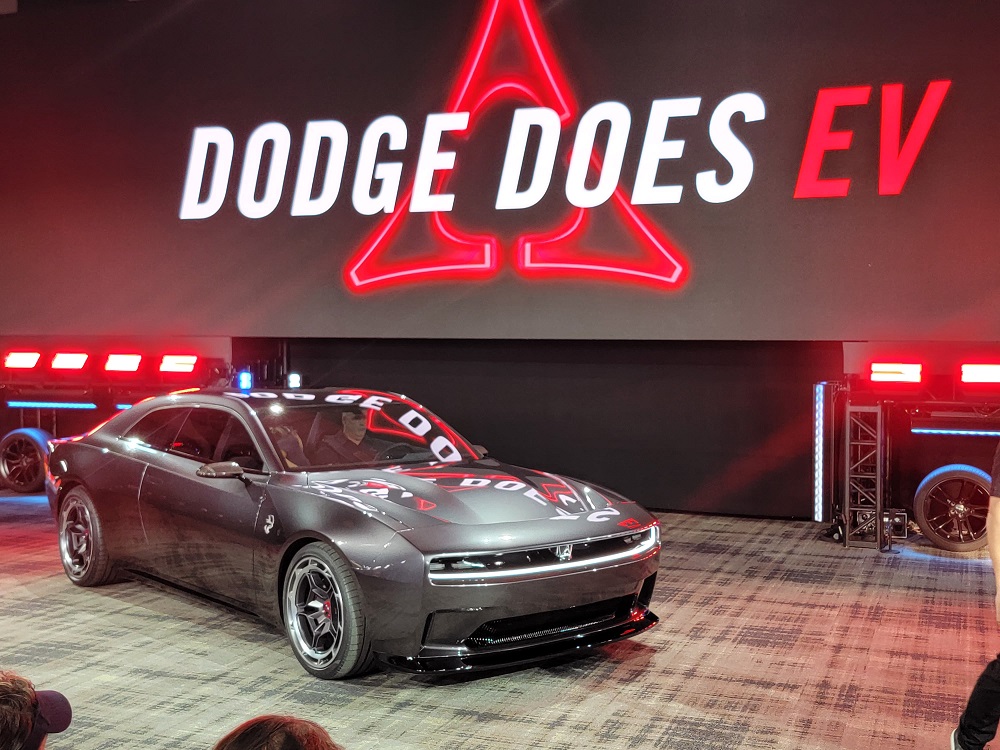
Tim Kuniskis opened the press event by talking about the first day of muscle car announcements, which focused purely on the current Dodge Challenger and Charger. Next, he introduced us to the new Dodge Hornet in GT, R/T and GLH trim, which was the focus of the second day of announcements during Speed Week. Finally, he got to talking about how the automotive industry is going electric and there is no way – or no point – in the Dodge brand trying to fight it.
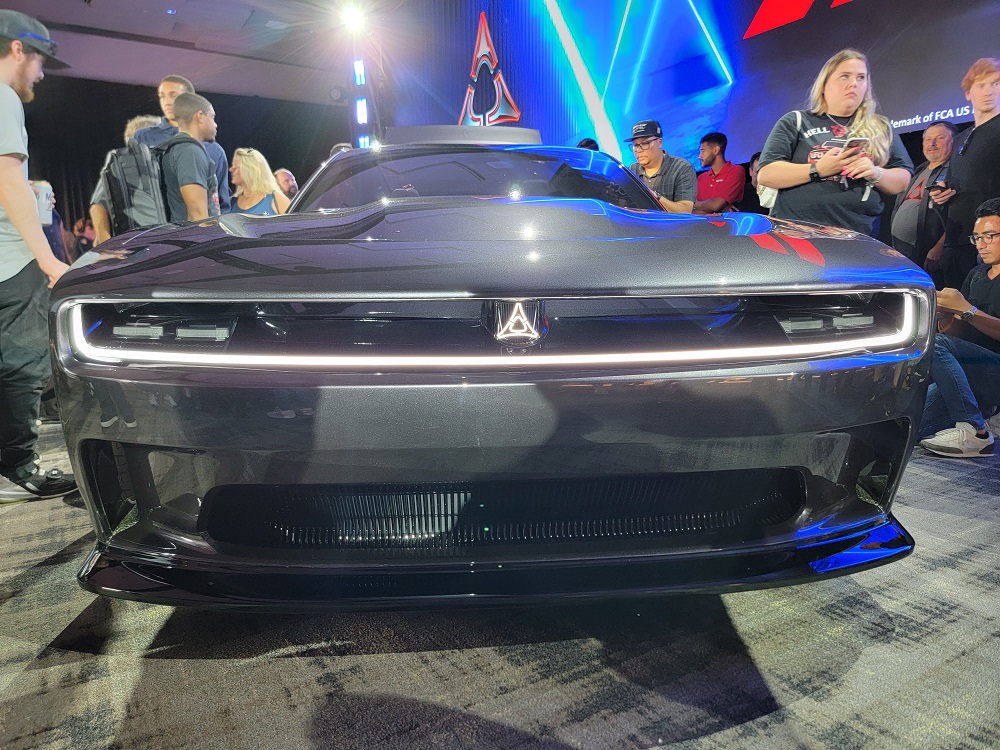
Instead of fighting the move to electric, Dodge opted to celebrate the change by creating an EV that muscle car fans can enjoy – a car that actually looks like a car, rather than a half an egg with windows and wheels. Kuniskis finished this introduction by stating that you “might not see the new Dodge EV coming, but you will hear it.” He then gestured to the white curtain to his right, which slowly opened, revealing the glowing front end of the new Dodge Charger Daytona SRT Concept.
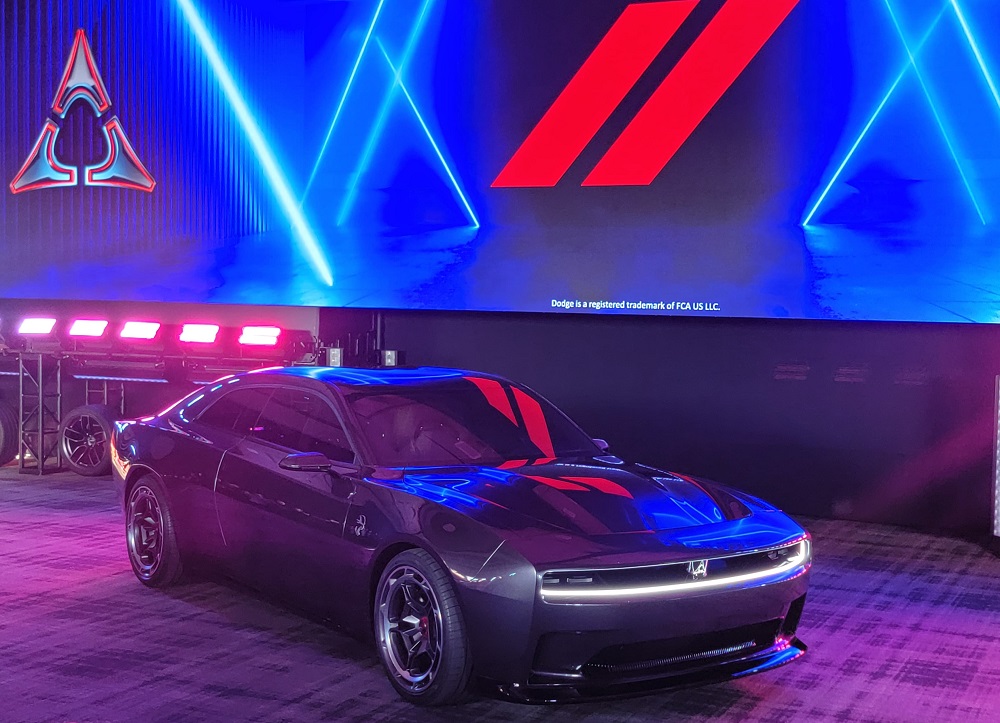
My first thought was that hearing an EV before seeing it doesn’t make sense, but that was when the new Charger Daytona SRT Concept roared to life. I expected the new Dodge battery-powered vehicle to look great and offer stunning performance, but never did I expect that the brand would figure out a way to have their EV roar like a Hellcat.
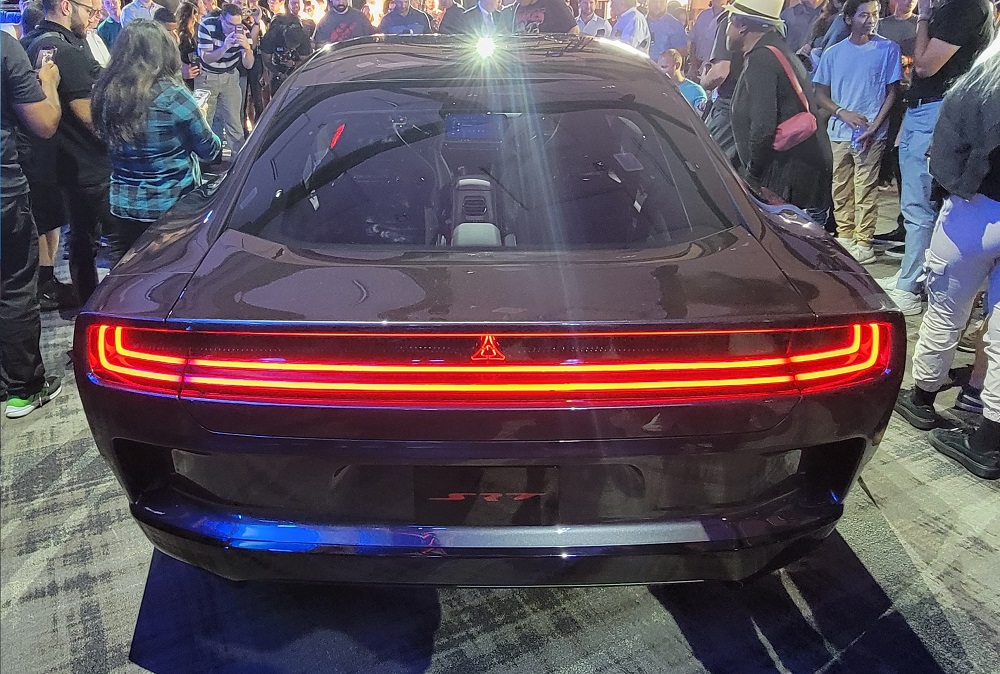
Once the curtain was open all of the way, the Dodge Charger Daytona SRT Concept slowly drove forward with the unique electronic idle bellowing from the undercarriage. Every so often, the driver would rev the electric motor, creating the instantly-famous high-pitched scream. Once arriving at its spot in the Stellantis Design Dome, a turntable in the floor spun the car, giving us all a great look at the new EV from every angle and as it turned, the driver continued to occasionally rev the motor. At one point, the rear of the car was pointed at me, showcasing the latest incarnation of the Dodge “racetrack” taillight design and when the driver revved the engine, I could feel air movement, just like with the exhaust flow of a Hellcat car. As the electric muscle car spun on the turntable, it also showcased the return to a two-door design for the Charger nameplate.
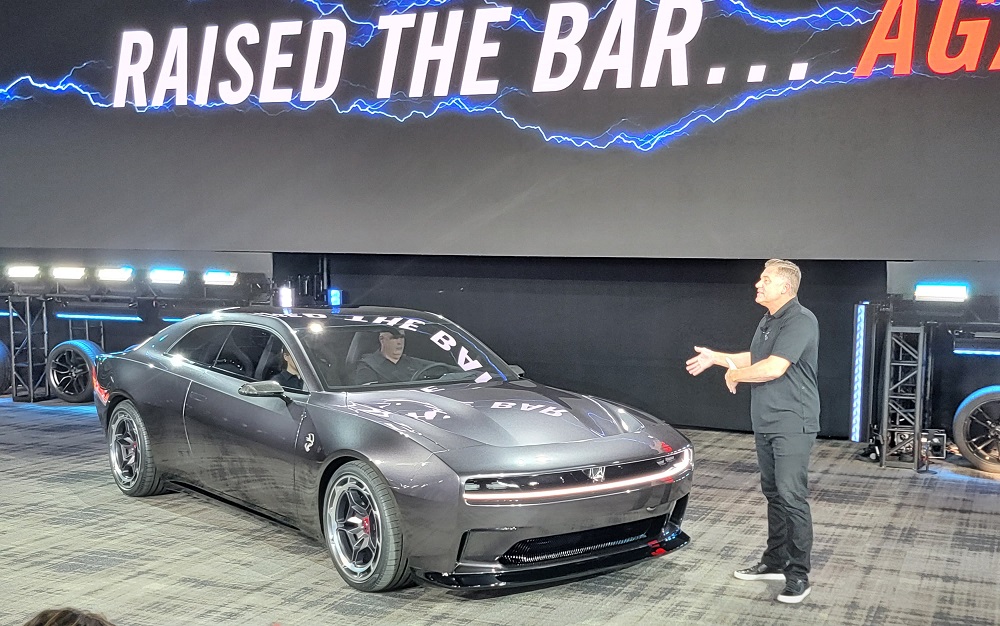
I won’t lie. I am not a big fan of electric vehicles. My job in the automotive media world has allowed me to test drive several modern EVs and they were all fine for what they are, but they all lack that special something that I want from a performance car. I don’t care for the exterior design of most of them, either, but the Dodge Charger Daytona SRT Concept has stolen my heart. It looks incredible on the outside and the addition of a truly unique exhaust system setup is awe-inspiring. Dodge has created an EV that I – someone who daily drives a Hellcat Challenger and owns three other vehicles with modified V8 engines – can truly see myself driving and enjoying.
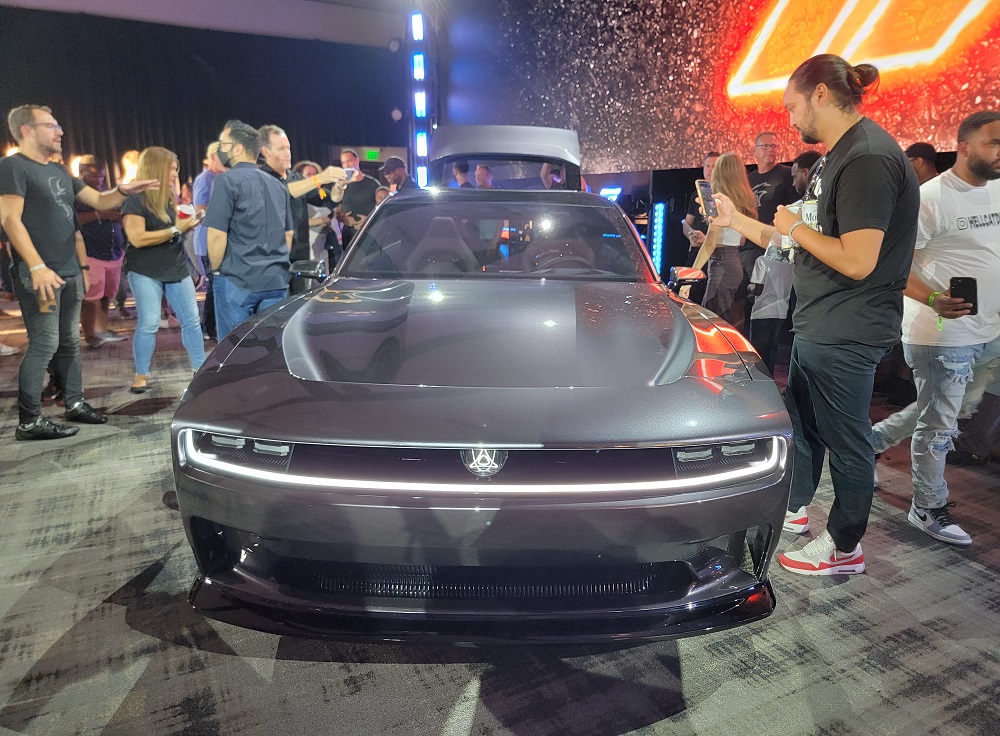
We imagine that your key questions on this beautiful EV pertain to power levels and performance figures. Sadly, Dodge has not yet shared any of that information. We will have to wait a while for all of those official numbers, but here is what we do know about the Charger Daytona SRT Concept.
Dodge Charger Daytona SRT Concept Car Details
This muscular looking battery-powered vehicle is a two-door model, but it has a longer roofline and wheelbase than the Challenger, leading to more interior space and more functional rear seats. The interior is laid out like a 2+2 sedan, but there are no rear doors. There is a large rear hatch that lifts up, providing easy access to the spacious rear storage area and for more cargo space, the rear seats easily fold flat.
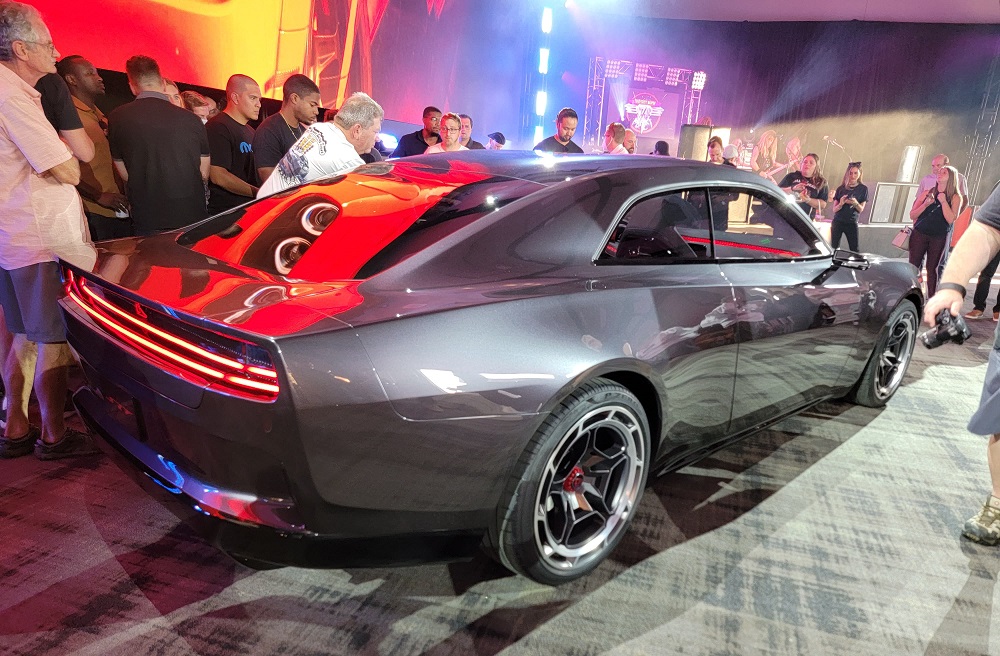
Dodge plans to offer this electric Charger in three power levels available from the dealership, along with two upgrade packages for each from Direct Connection, some using a 400-volt system while the others use an 800-volt system. The most powerful package from Direct Connection will be called the Banshee, which is the 800-volt trim level displayed on the concept car shown here with center-lug 21-inch wheels wearing 305mm tires up front and 325mm rubber out back. Every power level will feature the Power Shot system, which will allow short bursts of peak output, leading to the best possible acceleration numbers without getting the batteries too hot. This system is activated by a button on the steering wheel, but it requires a period of downtime between uses, allowing time for proper thermal management.
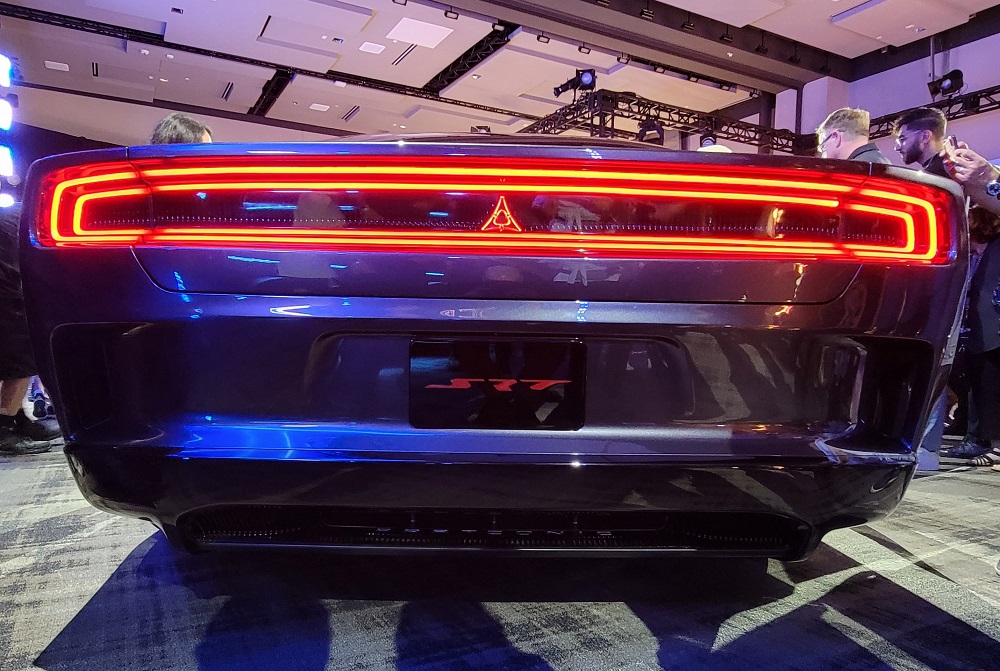
Every new Charger Daytona EV will come standard with all-wheel-drive and Dodge’s unique eRupt transmission system, which adds shift characteristics to break up the unnatural, linear feel of the electric acceleration. All models will also come with the patented Fratzsonic chambered exhaust system, which uses a system of tubes like an exhaust system and not a speaker, to create the motor sound when the vehicle is ready for action. At its peak, the Fratzonic exhaust system will scream to 126 decibels, which is the same volume level as the Hellcat. You can hear the system in the video below from the formal debut event.
Speaking of the Hellcat, while Dodge hasn’t announced any performance numbers, the brand has stated that the Banshee model will beat the SRT Hellcat in every performance metric. Even if we pick the “lowest performance” Hellcat with 707 horsepower, they are still capable of low-11-second quarter mile times and a top speed of 199 miles per hour. To beat those numbers, the Banshee will likely cover the quarter mile in the 10-second range while reaching a top speed over 200 miles per hour. It should be noted that in the official press release introducing this concept car, Dodge pointed out that the original Charger Daytona was the first production car to go 200 miles per hour, serving as another possible hint of a top speed of over 200 miles per hour for the EV.
You might be wondering how Dodge is getting away with an electric vehicle that is so boxy and so unlike every other EV on the market today. At first glance, the grille of the Charger Daytona SRT Concept has a flat front end that would capture air, but upon a closer look, the upper portion of the grille is open, flowing up across the rounded hood and windshield. Dodge calls this unique design the R-Wing, and it shares its basic flow pattern with the classic Charger Daytona wing car. There is also key sculpting around the front end and air curtains out back to allow this muscular design to yield incredible aerodynamics.
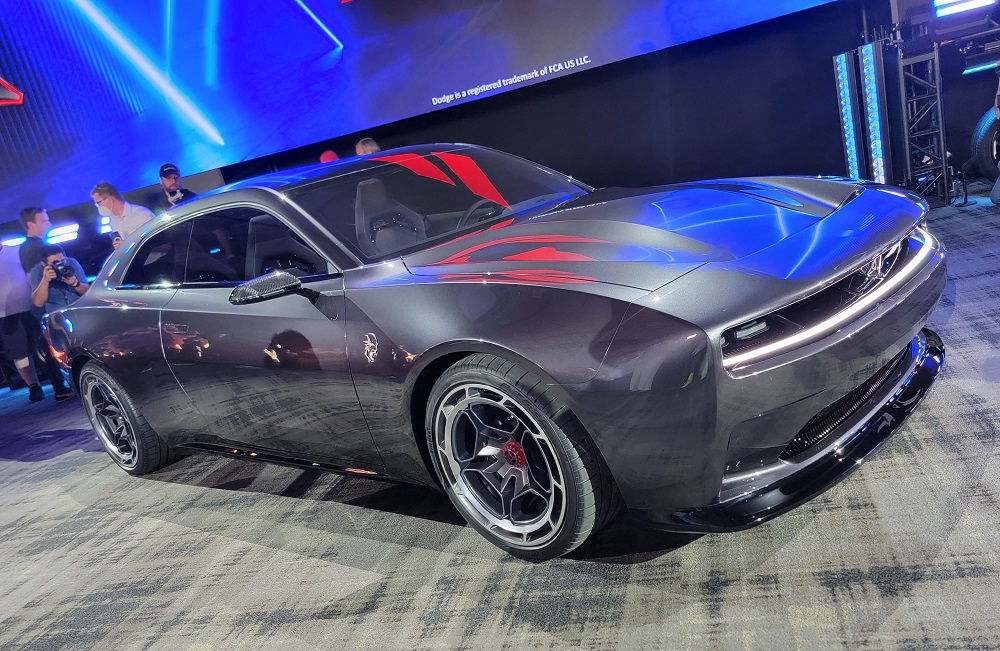
Kuniskis didn’t provide any hard figures, but he did explain that the 2022 Dodge Charger is 25% more efficient than the 1936 Chrysler Airflow, which was the first vehicle designed to yield groundbreaking aerodynamic properties. The new Charger Daytona Concept is 25% more aerodynamic than the current Charger sedan and thanks to the innovative exterior design, these slippery characteristics are achieved with style and attitude. Frankly, I think that the design is breathtaking.
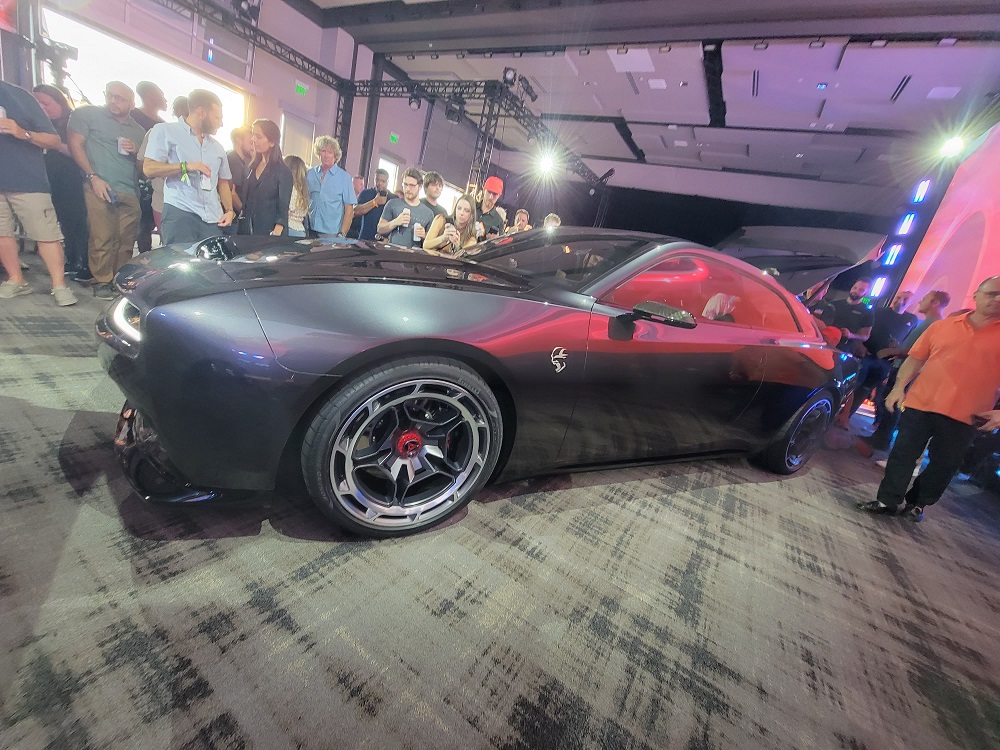
The interior features a 2+2 seating design with racing-inspired carbon fiber buckets in the front and rear. This thin, lightweight seats take up less interior space, leading to more useful passenger space. Of course, there is loads of technology in the Charger Daytona BEV concept car, with a 12.3-inch infotainment screen, a curved 16-inch gauge cluster screen and an 8-inch-wide head-up display area on the windshield. A “parametric texture” flows from the dash, down through the doors to create a very high tech, futuristic look and feel, while the exposed carbon fiber floor shows how far the engineers went to reduce weight. Kuniskis ended the media preview of the Charger Daytona EV is pointing out that it is not a “science project”, and everything that they have engineered for this car was designed with production intent. While we are likely to see some changes between concept and production, the electric future of the Dodge brand is looking very bright, based on this gorgeous new Charger Daytona.
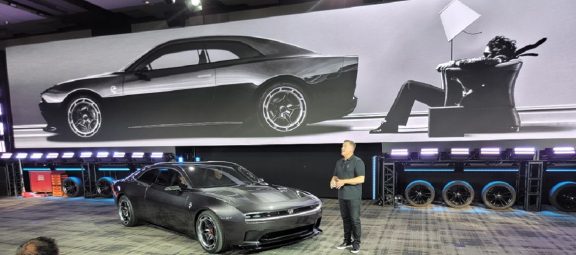
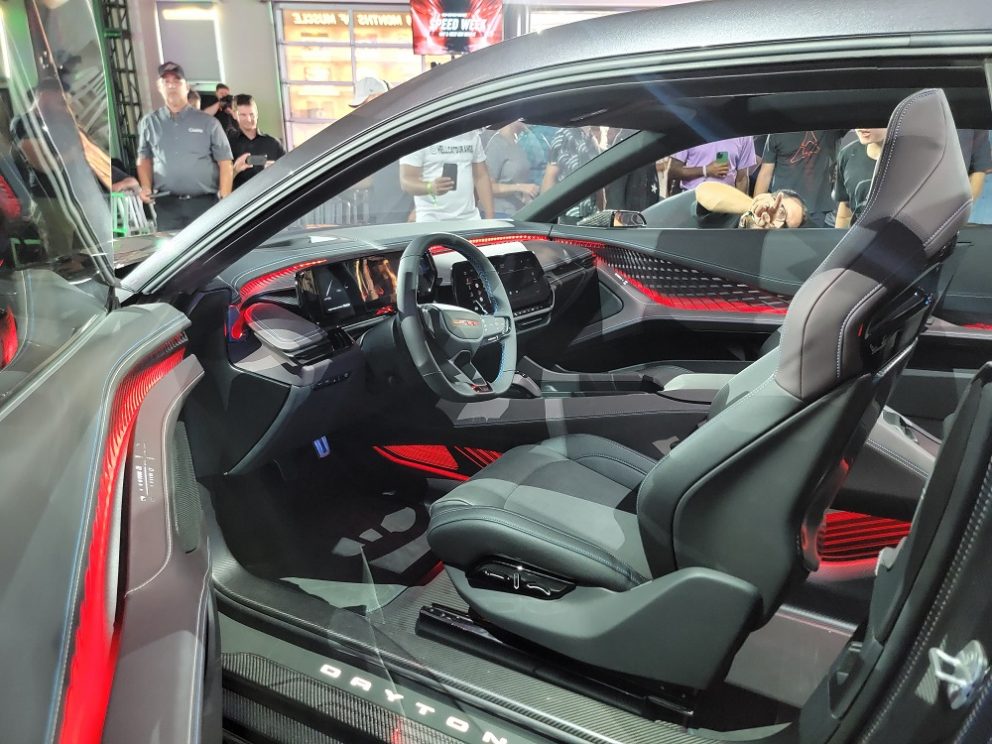
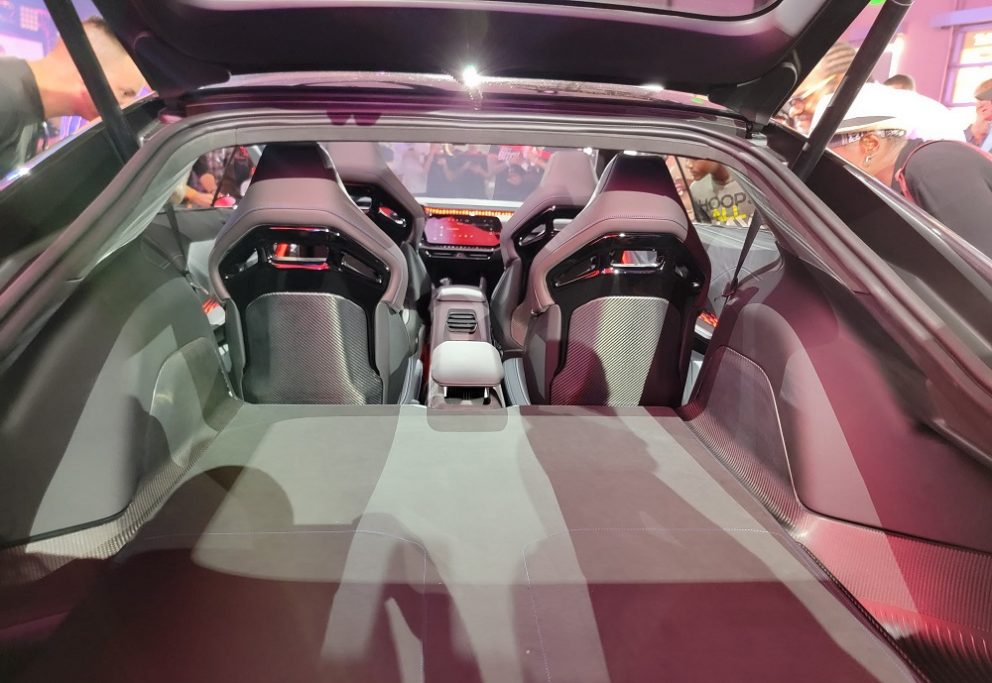
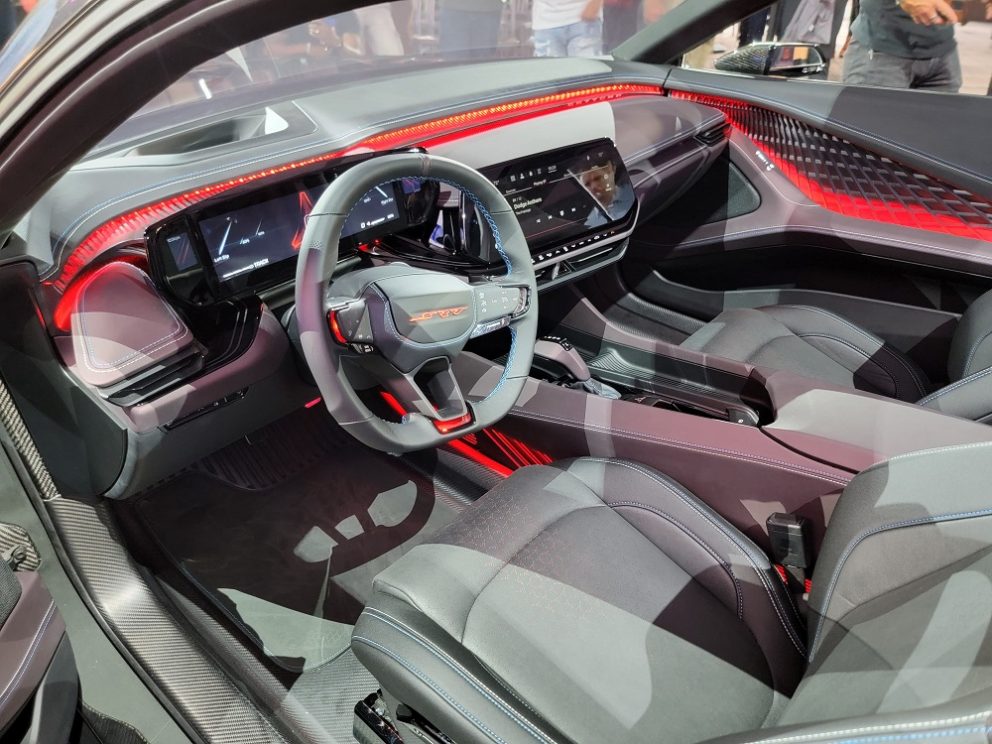
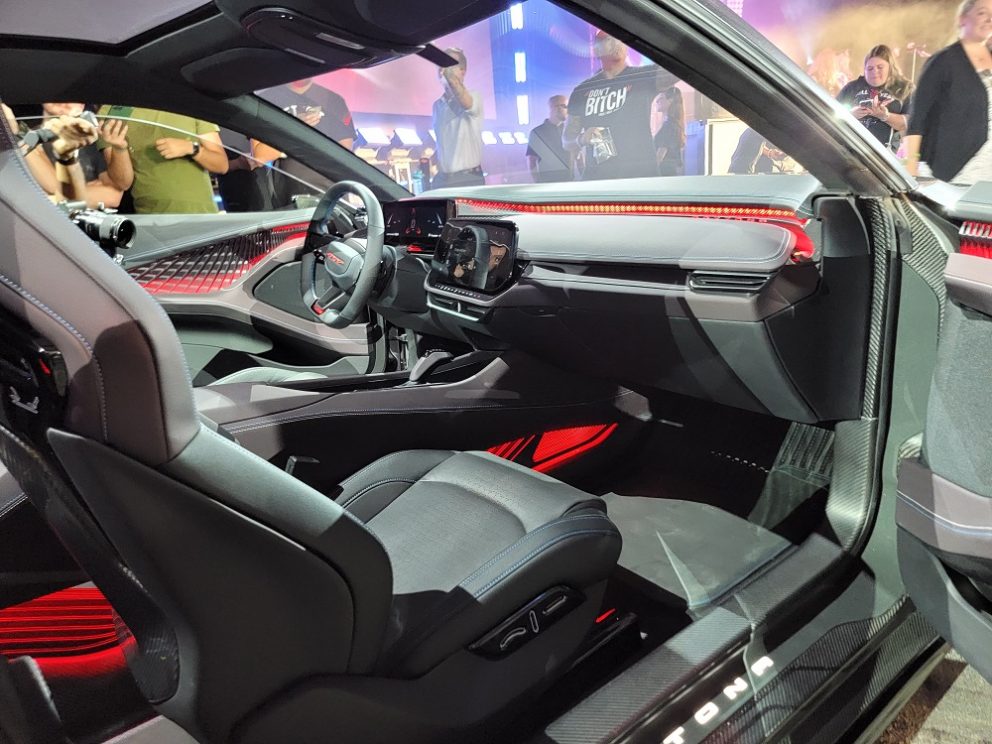
0 Comments